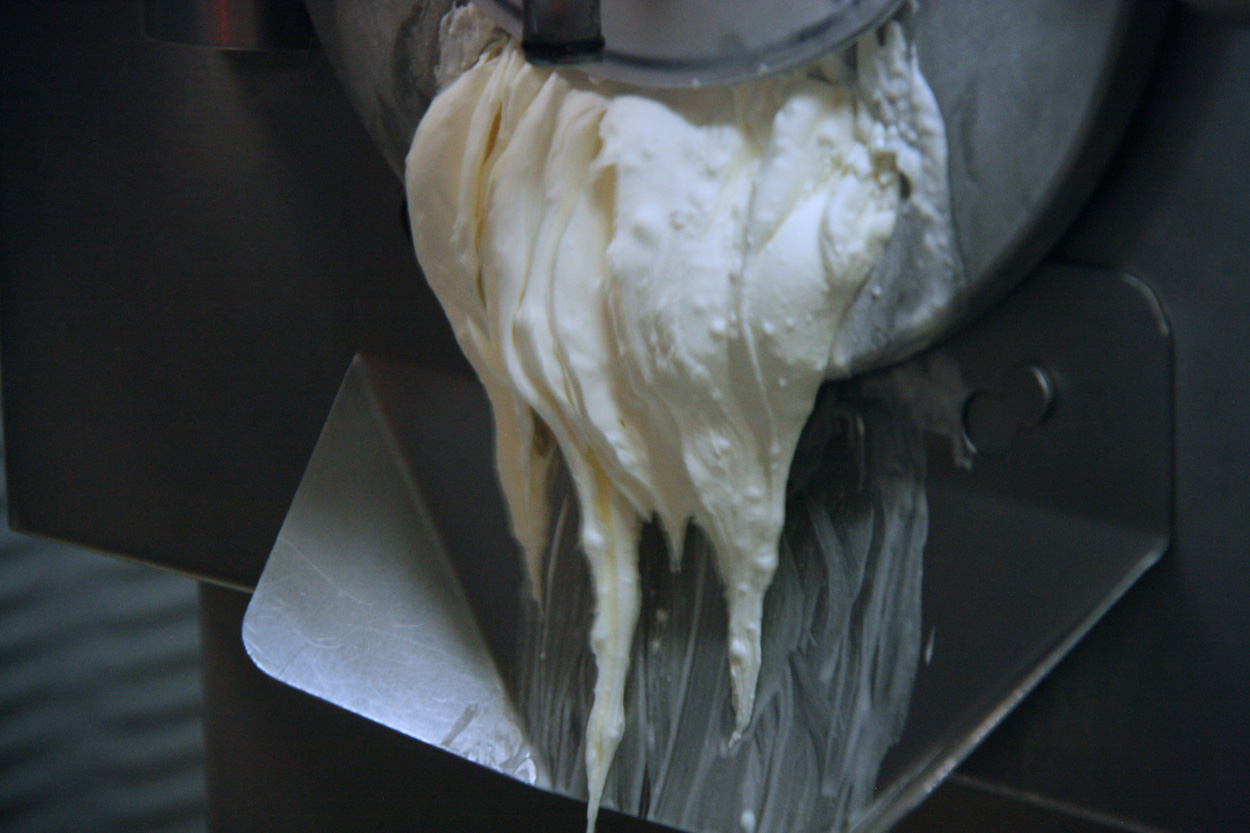A gelato tour in Palazzo del Freddo
/A few months ago, I received an intriguing email from a place called the Palazzo del Freddo. Subject line: “Oldest gelateria in Italy – guided tours.”
Yes!! I thought, flipping open my calendar. I’d planned to be in Rome on June 10, my birthday, for some much-needed R&R between tours. Ice cream is now and ever shall be my favorite food, so what better way to celebrate a birthday than in Rome’s oldest gelateria?
Two months later, I’m heading down Via Principe Eugenio towards the Palazzo del Freddo, where I’m scheduled to join 20 high school students from St. Louis for a gelato tour.
It’s a short walk from the Termini train station to the Esquilino neighborhood. Today the boulevard is radically different from the time when Giovanni Fassi founded his ice-cream palace here in 1928. It’s lined with Chinese clothing shops, strangely empty of merchandise. At most, a dozen t-shirts and cargo pants hang on display, far outnumbered by empty hangers. These cubbyholes are fronts for something—counterfeit purses and jeans sold in the back, perhaps. In any case, they’re part of a powerful wave of legitimate and illegitimate commerce from China that’s crashing over Rome, Florence, and beyond.
Up ahead, I spy people with towering cones of gelato emerging from a massive palazzo. Inside, the old Italy reemerges: a cacophony of squealing children and hobnobbing adults lined up for gelato, the national treat.
Andrea Fassi, a fifth-generation family member, comes down to greet me. Chatting in rapid, Roman-accented Italian, he explains how a visit to the Heineken brewery in Amsterdam inspired him to begin these educational tours a year ago. They’ve taken off like wildfire.
Soon I’m tagging behind a gaggle of teenaged girls from Missouri. Our guide, the ebullient Pia Richardson, recites the family history, which begins in 1880 with Giacomo Fassi, a beer and ice vendor. His son Giovanni opens a pastry and ice cream shop on Piazza Navona, and soon the talented confectioner is making pastries for King Vittorio Emmanuele III. The critical turning point comes when the king orders all his workers to shave off their facial hair. Proud of his opulent mustache, Giovanni refuses. He leaves the king’s employ and builds the Palazzo del Freddo from the ground up, in the same building we see today.
Vintage Art Deco posters decorate the shop and bear witness to Giovanni’s mastery of marketing, a skill he’d picked up during time in the U.S. “Chi ha il telefono ha il Palazzo del Freddo a casa!” says one that shows an early rotary telephone. “Whoever has a telephone has Palazzo del Freddo at home”—a cryptic tagline now, but in the 1930s, the message was clear: Those who could afford new-fangled telephones had wealth, class, and good taste—and they ate the best gelato. Giovanni also pioneered the use of dry ice to transport ice cream and launched telegelato, multi-portion cartons of gelato that could be shipped to places as far-flung as Tunisia and London.
We leave the “museum”—a tiny collection of antique whisks, cream vats, and historic documents lined up behind a velvet rope—and don paper caps to enter the laboratory. Here Alessandro, the head gelato-maker, whips up two batches before our eyes, mixing rivers of cream and milk with various sugars and his flavors of choice.
Today it’s Arborio rice and banana. After churning for five minutes in a refrigerator-sized ice-cream maker, a pre-gelato emerges. It’s creamy and soft, like a Mr. Softee, and would normally go into the deep freezer for four hours before being sold in the shop. Samples of the rice gelato are passed out and gobbled down. It’s delicious, akin to a frozen rice pudding. Then comes the banana gelato. We all start to share cups. (It’s getting to be a lot of gelato.)
We file into the parlor and have our choice of three more flavors. The list of 52 options tempts with classics like chocolate, strawberry and pistachio (Italians’ three top favorites) as well as more unique choices like licorice, tiramisu and pink grapefruit. No one resists.
Since it’s my birthday, I decide to go all out and sample the house specialty as well: i sampietrini, tiny squares of gelato dipped in chocolate. These resemble the cobblestones that pave Rome’s ancient streets, which get their nickname from the workers who maintained the basilica of San Pietro, or St. Peters. “They’re great for dinner parties,” says Pia. Indeed, I’d love to telegelato an assortment of these bite-sized morsels to my next dinner festa.
In the summertime, 1,000 kilos (2,200 pounds) of gelato get made in this crowded lab every day, making it Rome’s largest maker of artiginale gelato (which excludes all gums and artificial additives). Giovanni Fassi refused to join the wave of industrial gelato makers that emerged in the 1950s. On his retirement, the savvy businessman wrote a list of three rules to his successors:
1) Always offer a product of quality, because the client knows how to judge.
2) When possible, place the production equipment in view, so that the client can see.
3) Offer fair prices, because the client will compare.
That’s old-fashioned advice that bears the test of time. Now I just need someone to advise me when to stop sampling the goods!
Palazzo del Gelato, Via Principe Eugenio 65, Roma








